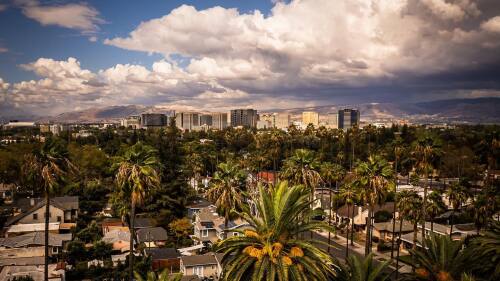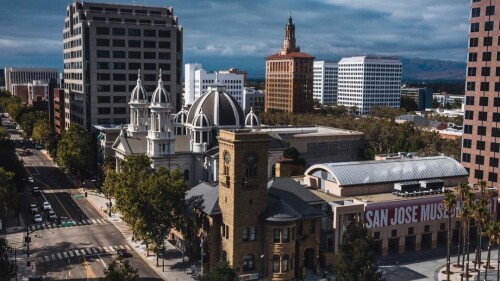Happy April Fools’ Day, San Jose. Us locals know that we have a very particular brand of humor, so today, we wanted to explore a San Jose spot that often evokes curiosity + giggles — the Quetzalcoatl statue in the Plaza de César Chávez.
If you’ve seen this statue before and wondered why it looks a bit like doggie doo-doo, don’t worry — we have too. 💩
So, take a seat (maybe on the toilet) and enjoy this scatological tale of scandalous statues, bureaucratic tussling, and maybe… artistic vengeance.
The statue’s history
The poop statue’s story began when the controversial Thomas Fallon statue was flushed by public opinion in 1988.
In response, the city commissioned a new piece of art from Mexican-American sculptor + SJSU alum Robert Graham — who was known for designing Los Angeles’ Olympic Gateway + Detroit’s Joe Louis Memorial.
For this commission, Graham wanted to depict the Aztec god, Quetzalcoatl, symbolizing “the spirit of social harmony and diversity.” His early plans featured an enormous bronze, feathered serpent, wings outstretched + large enough for people to walk inside.
However, this wasn’t the design that was unveiled to the public in 1994. So what happened?
The rumors
City officials may be to blame — the original design was allegedly axed because of concerns about the statue becoming a shelter for the unhoused. Then, Graham took a trip to Mexico, where he became inspired by stylized, coiled rattlesnake depictions of the god.
Still, some locals don’t accept this story + believe the statue’s unique appearance was a deliberate middle-finger to the city. But why?
Well, in the late 1980’s Graham submitted designs for “gateways” to Downtown San Jose, but these were rejected by the city + ridiculed by local media — some say that Graham never forgot this slight.
We’ll never know for certain whether Graham actually intended to drop a metaphorical dookie in San Jose. In fact, conversations around its misunderstood appearance are still evolving to this day.
So regardless of whether you see the statue as a serpent or a sneaky swirl of scat, we hope that we can all acknowledge it as the meaningful piece of art + San Jose history that it is.













